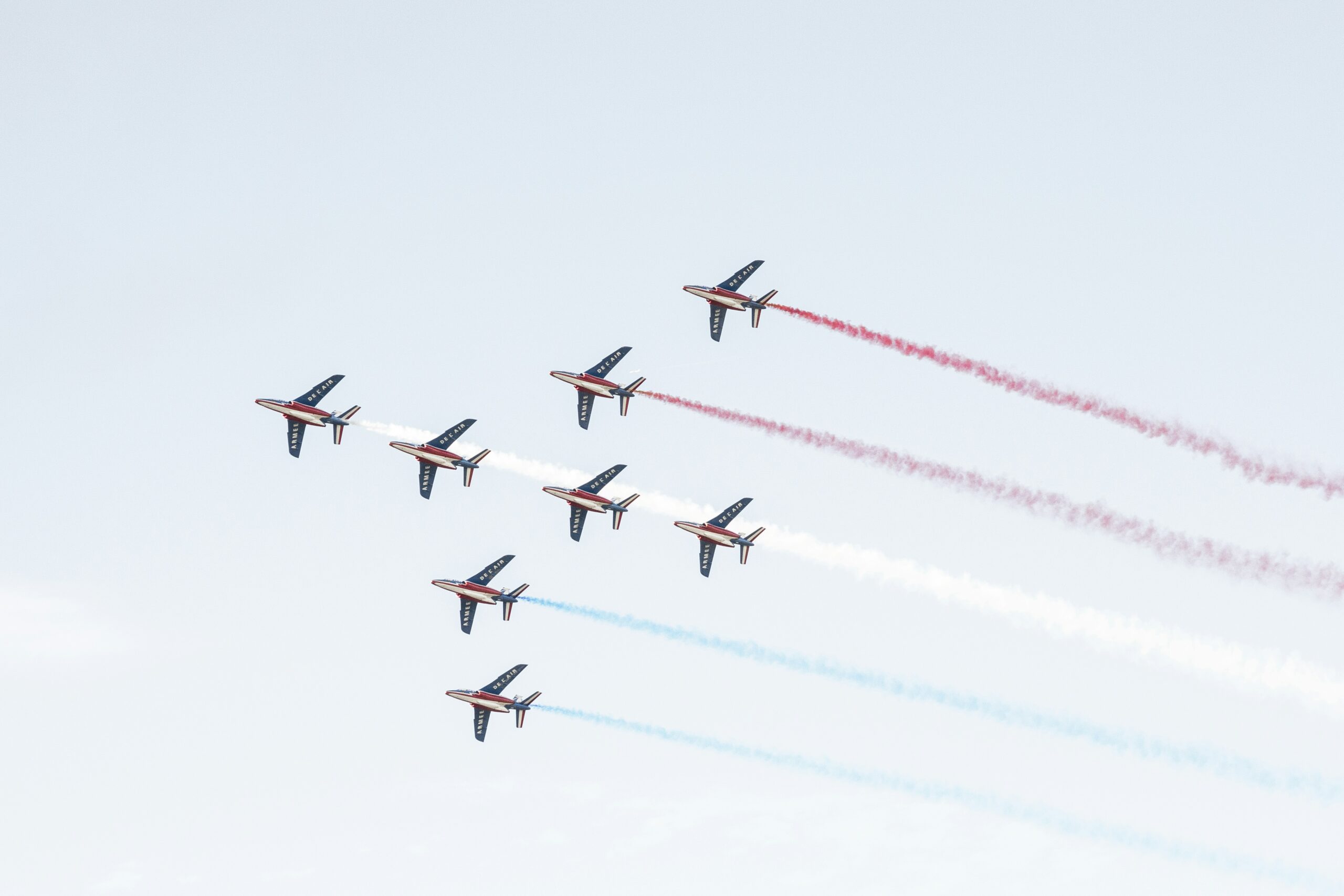In the world of scopes, there are two popular types that often leave shooters scratching their heads: the first focal plane (FFP) and the second focal plane (SFP) scopes. But fear not! This article is here to shed some light on the key differences between the two. Whether you’re a seasoned hunter or a newbie to the world of scopes, understanding the distinctions between FFP and SFP scopes can greatly enhance your shooting experience. So sit back, relax, and let’s dive into the wonderful world of focal planes!

Understanding Rifle Scopes
Rifle scopes are essential tools for shooters, allowing them to aim accurately at targets and improve their shooting performance. For those new to the world of firearms and optics, understanding rifle scopes can be a bit overwhelming. From the components that make up a rifle scope to the concept of focal plane, there are several factors to consider when choosing the right scope for your needs.
Defining a Rifle Scope
A rifle scope is a sighting device that magnifies the image of a target and aids in aiming and accuracy. It consists of a tube, optical lenses, reticle (crosshair), adjustments for windage and elevation, and other features that enhance the user’s shooting experience. The primary purpose of a rifle scope is to bring distant targets into close view, allowing shooters to make precise shots.
Components of a Rifle Scope
To better understand how rifle scopes function, it is important to be familiar with their main components. These components work together to provide a clear and magnified image of the target.
-
Tube: The tube is the main body of the scope and houses the internal components. It is usually made of aluminum or other durable materials.
-
Objective Lens: The objective lens is positioned at the front of the scope and gathers light from the target. It determines the scope’s light-gathering capability.
-
Ocular Lens: The ocular lens is located at the rear of the scope and is responsible for transmitting the magnified image to the shooter’s eye.
-
Reticle: Also known as the crosshair, the reticle is a pattern of lines or dots that helps the shooter align the scope with the target.
-
Windage and Elevation Adjustments: These adjustments allow the shooter to compensate for wind drift and bullet drop, ensuring accurate shots at varying distances.
Functionality of a Rifle Scope
The functionality of a rifle scope relies on several key features. When you look through the scope, the objective lens gathers light and focuses it onto the image plane. The image is then magnified by the ocular lens, allowing you to see the target more clearly. The reticle helps you align the scope with the target, aiding in precise aiming. Windage and elevation adjustments enable you to compensate for external factors that may affect bullet trajectory, such as wind and gravity.
The Concepts of Focal Plane
The focal plane is a crucial concept in rifle scopes and plays a significant role in determining how the reticle appears when you look through the scope. Understanding the focal plane is essential when choosing the right scope for your shooting needs.
Definition of a Focal Plane
In optics, the focal plane refers to the plane perpendicular to the optical axis where the image of an object is formed. It represents the point where light rays coming from an object converge to create a focused image. In the context of rifle scopes, the focal plane is the position within the scope where the reticle is located.
Importance of Focal Plane in Scopes
The focal plane is vital in determining the behavior of the reticle when you adjust the magnification of the scope. It affects whether the reticle appears to change size when you zoom in or out. The two main focal plane options available in rifle scopes are the first focal plane (FFP) and the second focal plane (SFP), each with its own characteristics and applications.
Exploring First Focal Plane Scopes
First focal plane (FFP) scopes have gained popularity among shooters due to their unique features and versatility. Let’s delve deeper into what defines first focal plane scopes and how they function.
Definition and Characteristics
In a first focal plane scope, the reticle is located in the front focal plane, meaning it changes size proportionally as you adjust the magnification. This ensures that the reticle subtensions (the distance between markings) remain consistent regardless of the magnification level.
One of the key characteristics of FFP scopes is that the reticle appears larger at higher magnifications, making it easier to see and use for holdovers and range estimation. This feature allows shooters to utilize the full potential of the reticle at any magnification setting.
Working Mechanism of First Focal Plane Scopes
The working mechanism of a first focal plane scope is straightforward. When you increase or decrease the magnification, the size of the reticle also changes. This maintains the reticle’s relative size to the target, allowing for accurate holdovers and ranging.
For example, if you have a ballistic reticle with markings that represent the bullet’s drop at specific distances, the reticle’s measurements will remain correct regardless of the scope’s magnification. This makes first focal plane scopes advantageous for long-range shooting, as the reticle’s sub tensions remain valid at any zoom level.
Advantages of First Focal Plane Scopes
First focal plane scopes offer several advantages for shooters:
-
Reticle Versatility: Due to the reticle’s size changing with the magnification adjustments, FFP scopes allow for accurate holdovers and ranging at any zoom level. This versatility can be particularly useful in dynamic shooting scenarios.
-
Ease of Use: The reticle’s size appearing larger at higher magnifications enhances visibility and ease of use, especially when shooting at smaller targets or in low-light conditions.
-
Consistent Subtensions: The reticle’s subtensions remain true regardless of the magnification, providing accurate aiming points for windage, elevation, and bullet drop compensation.
Limitations of First Focal Plane Scopes
Despite their advantages, first focal plane scopes have a few limitations to consider:
-
Cost: FFP scopes tend to be more expensive compared to their second focal plane counterparts. The complex design and manufacturing process contribute to their higher price.
-
Cluttered Reticle at Low Magnification: At low magnification levels, the reticle can appear too large and cluttered, potentially obscuring the target. This can be a drawback when shooting at close ranges or in fast-paced situations.
Investigating Second Focal Plane Scopes
Second focal plane (SFP) scopes have been widely used for years and remain a popular choice for many shooters. Let’s explore the characteristics and functionality of second focal plane scopes.
Definition and Characteristics
In a second focal plane scope, the reticle is located behind the magnification lenses, meaning it stays the same size as you adjust the magnification. This results in the reticle appearing smaller at lower magnifications and larger at higher magnifications.
The main characteristic of SFP scopes is that the reticle size remains constant regardless of the magnification setting. This can provide shooters with a clear and unobstructed view of the target, particularly at low magnification levels.
Working Mechanism of Second Focal Plane Scopes
The working mechanism of a second focal plane scope is simple. As you adjust the magnification, the reticle remains the same size in relation to the image formed at the back of the scope. This means that the reticle’s subtensions change proportionally with the target’s size, making it suitable for specific holdovers and range estimations at specific magnification settings.
For example, if your scope has a ballistic reticle with markings that correspond to the bullet’s drop at certain magnifications, these markings will only be accurate at the specific magnification level for which they were designed.
Advantages of Second Focal Plane Scopes
Second focal plane scopes offer several advantages for shooters:
-
Clarity at Low Magnification: The reticle being consistent in size maintains a clear and unobstructed view of the target, making SFP scopes ideal for close-quarters shooting or fast target acquisition.
-
Affordability: SFP scopes are generally more affordable compared to FFP scopes. This makes them a popular choice among shooters who want a reliable scope without breaking the bank.
-
Simplicity: The reticle’s size remains constant, simplifying the use of the scope and providing a consistent aiming experience.
Limitations of Second Focal Plane Scopes
Despite their advantages, second focal plane scopes have a few limitations to consider:
-
Holdover Complications: Since the reticle’s subtensions change with magnification adjustments, holdovers and ranging become specific to certain magnification settings. This can limit the versatility and flexibility of the reticle.
-
Less Useable Subtensions: The reticle’s subtensions may not be usable at all magnification levels, as they are only accurate at particular settings. This can pose challenges in scenarios that require quick adaptations to changing shooting conditions.

Difference Between First and Second Focal Plane Scopes
Understanding the differences between first focal plane (FFP) and second focal plane (SFP) scopes is crucial when deciding which one suits your shooting needs. Let’s explore the distinctions between the two options.
Differences in Position
The primary difference between FFP and SFP scopes lies in the position of the reticle in relation to the magnifying lenses. In FFP scopes, the reticle is located in the front focal plane, while in SFP scopes, it is located in the second focal plane. This difference determines how the reticle behaves when you adjust the magnification.
Differences in Functionality
The functionality of FFP and SFP scopes mainly differs in terms of how the reticle size changes with magnification adjustments. In FFP scopes, the reticle size changes proportionally with the target image, ensuring the reticle subtensions remain consistent at any zoom level. In contrast, SFP scopes maintain a constant reticle size, making it suitable for specific holdovers and range estimations at particular magnification settings.
Differences in Visibility
Another notable difference between FFP and SFP scopes is the visibility of the reticle at different magnification levels. In FFP scopes, the reticle appears larger at higher magnifications, enhancing visibility and ease of use for holdovers and range estimation. SFP scopes, on the other hand, maintain a clear and unobstructed view of the target at low magnification, providing clarity in close-quarters shooting situations.
Switching Between First and Second Focal Plane Scopes
While both first focal plane (FFP) and second focal plane (SFP) scopes have their advantages and limitations, shooters may find themselves needing to switch between the two depending on different shooting conditions and preferences. Understanding the transition between FFP and SFP scopes is essential for adjusting focus and parallax effectively.
Understanding the Transition
Switching between FFP and SFP scopes requires shooters to be aware of the specific capabilities and characteristics of each focal plane. Familiarize yourself with the reticle’s behavior and size change when adjusting the magnification, as this will affect how you aim and utilize the scope.
When transitioning from an FFP scope to an SFP scope, be mindful of the potential changes in holdovers and range estimation. The subtensions on the reticle may not correspond accurately if the SFP scope’s magnification setting differs from the FFP scope’s zoom level.
Adjusting Focus and Parallax
When switching between FFP and SFP scopes, it is crucial to adjust the focus and parallax settings accordingly. Focus adjustment ensures a clear and sharp reticle and target image, while parallax adjustment reduces the impact of parallax error, which can cause the reticle to appear to move in relation to the target.
Be sure to read the scope’s user manual and follow the manufacturer’s instructions when adjusting focus and parallax settings. Familiarize yourself with the specific adjustments your scope offers to achieve optimal accuracy and clarity.

Factors to Consider When Choosing Between FFP and SFP Scopes
Deciding between a first focal plane (FFP) and second focal plane (SFP) scope requires understanding your shooting needs and preferences. Several factors should be taken into consideration when making this decision.
Intended Use
Consider the type of shooting you primarily engage in. If you often shoot in dynamic scenarios that require quick adaptations and versatile holdovers, an FFP scope may be beneficial. On the other hand, if you frequently shoot at close ranges or require a clear view of the target, an SFP scope may be more suitable.
Type of Firearm
The type of firearm you use can influence your choice of focal plane. For example, if you primarily shoot long-range distances with a precision rifle, an FFP scope can provide the necessary ranging and holdover capabilities. If you use a firearm for close-quarters shooting or fast target acquisition, an SFP scope may be a better fit.
Scope Magnification
Consider the magnification range you typically use during shooting. FFP scopes excel when it comes to maintaining reticle subtensions at different zoom levels. If you frequently adjust magnification and require consistent holdovers and ranging, an FFP scope may prove beneficial. On the other hand, if you often shoot at specific magnification settings, an SFP scope can provide the necessary clarity and functionality.
Budget
Your budget is an important factor to consider when choosing between FFP and SFP scopes. FFP scopes tend to be more expensive due to their complex design and manufacturing process. If budget constraints are a concern, an SFP scope may offer a more affordable option without compromising on performance.
Common Misconceptions About FFP and SFP Scopes
With any topic, misconceptions tend to arise. Let’s address some common misconceptions about first focal plane (FFP) and second focal plane (SFP) scopes to help you make an informed decision.
Misconceptions About Clarity and Detail
One common misconception is that FFP scopes always offer better image clarity and detail compared to SFP scopes. While the reticle may appear larger and provide enhanced visibility at higher magnifications in an FFP scope, this does not guarantee superior clarity. Both FFP and SFP scopes can offer high-quality optics, and the level of clarity and detail depends on the specific scope’s design and manufacturing.
Misconceptions About Magnification Levels
Another misconception is that SFP scopes are limited in their application due to their reliance on specific magnification settings for accurate holdovers and ranging. While it is true that the reticle’s subtensions are accurate at specific magnification levels, shooters can still utilize these scopes effectively by understanding and adapting to their limitations. By being aware of the specific magnification settings at which the reticle is accurate, shooters can make precise adjustments and achieve the desired results.
Misconceptions About Cost and Quality
It is often assumed that FFP scopes are of higher quality compared to SFP scopes due to their higher price points. However, the cost of a scope does not solely determine its quality. Both FFP and SFP scopes can offer excellent performance and durability, and it ultimately comes down to the individual scope’s design, construction, and components.
Impact of Focal Plane Choice on Shooting Performance
The choice between a first focal plane (FFP) and second focal plane (SFP) scope can have a significant impact on your shooting performance. Understanding how the focal plane choice affects accuracy, speed, and adaptability is crucial for making an informed decision.
Effect on Accuracy
The focal plane choice can affect accuracy in different shooting scenarios. FFP scopes generally excel in maintaining reticle subtensions and providing accurate holdovers and ranging at various magnification levels. This versatility allows shooters to make precise adjustments and achieve accurate shots at longer distances.
SFP scopes, while limited to specific magnification settings for accurate subtensions, can still offer excellent accuracy with proper adjustment and understanding of the scope’s capabilities. Shooters who frequently engage in specific shooting scenarios that require consistent magnification levels can benefit from the consistent subtensions provided by SFP scopes.
Effect on Speed
When it comes to speed, the focal plane choice can influence target acquisition and engagement time. SFP scopes, with their constant reticle size and clear view of the target at low magnification, can provide faster target acquisition for close-quarters shooting or fast-paced scenarios. This can result in quicker and more efficient engagements, especially when speed is crucial.
FFP scopes, on the other hand, may require additional time to adjust the magnification and reticle size for precise holdovers. Shooters who prioritize speed and rapid target engagement in dynamic shooting situations may find SFP scopes more suitable for their needs.
Effect on Adaptability to Varying Shooting Conditions
The adaptability of a scope to different shooting conditions depends on the specific requirements of the situation. FFP scopes, with their ability to maintain reticle subtensions at different zoom levels, offer adaptability and versatility in scenarios that require quick adjustments to holdovers and ranging. Shooters who frequently encounter changing shooting conditions, such as varying distances or wind conditions, may find FFP scopes advantageous.
SFP scopes, while more limited in their subtension accuracy, can still adapt to specific shooting conditions by utilizing the reticle’s accuracy at the appropriate magnification setting. Shooters who primarily engage in specific shooting scenarios that do not require frequent adjustments may benefit from the simplicity and ease of use offered by SFP scopes.
Conclusion: Choosing the Right Focal Plane for You
Deciding between a first focal plane (FFP) and second focal plane (SFP) scope ultimately comes down to your personal shooting preferences and needs. The choice depends on factors such as intended use, type of firearm, scope magnification, and budget. By understanding the characteristics, advantages, and limitations of each focal plane option, you can make an informed decision that aligns with your shooting goals.
Remember that no single focal plane is universally superior – each has its own unique applications. Consider your shooting style, the distances you typically shoot at, the type of targets you engage with, and the shooting scenarios you encounter. Carefully evaluate the pros and cons of FFP and SFP scopes to determine which one best suits your shooting needs.
As technology advances, we may see further developments in focal plane preferences and the integration of new features. Stay informed about the latest trends and advancements in the field of rifle scopes to ensure you are equipped with the most suitable optic for your shooting endeavors.

